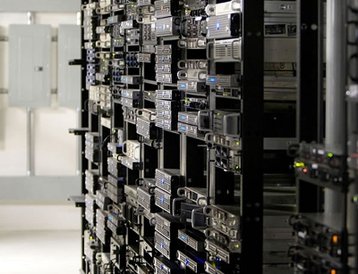While 2018 did not have the same M&A activity that took place in the hyperconvergence market in 2017, there was still quite a bit of development with a focus around moving to a software model, as well as using HCI in a hybrid cloud environment. Here are four predictions for hyperconvergence in 2019:
HCI adds SDS capabilities
It’s easy to get software-defined storage (SDS) confused with hyperconverged infrastructure (HCI) despite being quite different from a manageability perspective.
SDS resources are managed independently of the compute resources, especially in virtualized and containerized environments. SDS presents LUNS, volumes or files that need to be mapped to the relevant virtual machine or containers.
HCI is much more than storage. It’s still a software-defined infrastructure like SDS, but it is designed around compute constructs as opposed to a storage construct. With HCI, everything is managed at the compute level be it a virtual machine or a container. There are no LUNs, volumes or files to manage separately. That said, the challenge with HCI is that the virtualization software can limit the number of nodes in a cluster. Therefore, in many cases, customers need to deploy two different software-defined solutions for different use cases whereas a single software-defined infrastructure would be ideal.
While SDS cannot be used as true HCI because of traditional storage management constructs, HCI can and I predict will add in SDS capabilities in 2019 to bypass the cluster size limitation imposed by the virtualization software. By partitioning the servers to “App Servers” (those with applications VMs, virtualization software, and possibly storage) and “Data Servers” (those with storage only) under a common management framework, the same HCI software can scale to 1000s of servers in the same cluster. This enables organizations to deploy a single vendor for both HCI and SDS use cases, while still keeping the value of each of the solutions.
Hybrid cloud becomes truly hybrid
Today’s HCI does not really fit into a hybrid cloud strategy as it is essentially taking the on-prem HCI software stack and just putting it on bare metal servers in the public cloud. While the goal of having the same management framework on-prem and in the public cloud is understandable, this model eliminates much of the value of the public cloud.
For example, what if you want to use some of the great cloud-native analytics applications that are only available in the public cloud? That’s not really possible when you just add an on-prem HCI software stack on bare metal servers in the cloud because the HCI software stack doesn’t leverage the rich capabilities that are available in the public cloud.
This new hybrid cloud model can also provide instant availability of enterprise application data in the public cloud. Whereas before it would take days to weeks to pull data back from the public cloud to recover on-prem, recovery in the public cloud can be instantaneous with a near-synchronous recovery point and five 9’s availability.
In both of these use case, there is a minimal replication footprint in the public cloud so that organizations are not burdened with the cost of keeping an entire on-prem software stack in the public cloud.
My prediction is that in 2019, we will start to see a different approach from HCI vendors to enable a much better fit to hybrid cloud strategy by leveraging the on-prem HCI tools that IT knows while at the same time taking advantage of cloud native services and applications that make the public cloud what it is.
HCI evolves into ACI
Containerization, like virtualization, is really just another form of abstraction. Containers are lighter and more portable than virtual machines, but both abstract applications and operating systems from hardware. While there will always be organizations that will have separate infrastructures for containers and virtual machines, most organizations will prefer a single infrastructure for both.
The HCI value proposition of reducing complexity in IT infrastructure is even more appealing to containerization as the goal from a DevOps perspective is to have as little IT interaction as possible. Therefore, it will be difficult to use traditional storage and SDS (Software Defined Storage) for containerization since it still requires storage management and some form of storage knowledge.
In some cases, containers are deployed within virtual machines and HCI is certainly a good solution for this model. However, to truly leverage containerization and container orchestration frameworks, HCI should natively support both types of abstraction, containerization and virtualization.
For all of these reasons, the growth of containerization and the long tail of virtualization will morph HCI into Abstraction Converged Infrastructure, or ACI. My expectation is that we will see the first implementations of ACI in 2019.
“HCI Software” continues to be misleading
There has been a lot of industry talk about a software approach to HCI, but most appliance vendors that introduced a software approach did it for all the wrong reasons. A software approach to HCI should primarily provide benefits to the customer. However, the main reason most appliance vendors are pursuing a software approach is to benefit themselves by moving from a hardware business category to a software business category and improving gross margins – not benefit their customers. Hyperconverged appliance vendors will continue to propagate a software message to please financial analyst even though the software they promote is essentially an “appliance in software clothing.
With a true software approach to HCI, a customer can install the software on existing servers from any vendor and transition into production – not just use it for a trial or proof of concept. A customer can also mix and match new and existing servers, different brands of servers, and different models of servers. The customer can also buy the software pre-configured on new servers and deploy those alongside software that was installed on existing servers.
A true software approach will also provide a choice of a perpetual or term license, which is extremely important now that storage is on a server refresh cycle. With a perpetual license the customer owns that license for life so they can transfer it to a new server during a server refresh cycle instead of only having the option of either paying for the license every year or every time they refresh their appliance.
Finally, a software approach provides the most flexibility when adding capacity as a customer can add drives to servers or replace lower capacity drives in servers with higher capacity drives. Obviously, customers can always add an entire server like they have to do with an appliance approach.
I anticipate that in 2019, hyperconvergence appliance vendors will continue to be ambiguous on the definition of software and will not provide to prospects all the benefits of a true software approach as HCI software vendors do.


